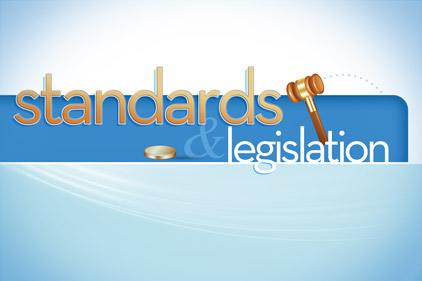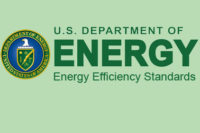The DOE regional efficiency standards will divide the country into three regions — North, Southeast, and Southwest — and the minimum efficiency standards for each equipment type will vary by the region in which it is installed. The new rules become effective in May 2013 for nonweatherized furnaces, and in January 2015 for weatherized furnaces, central air conditioners, and heat pumps.
DOE has proposed three possible approaches to enforcing the new standards, and HVAC associations recently commented on the possible impact these strategies could have on different sectors of the industry.
While both the Air Conditioning Contractors of America (ACCA) and Heating, Airconditioning and Refrigeration Distributors International (HARDI) have filed pending petitions against the DOE’s new rule through the United States Court of Appeals, the organizations have advised their members to proceed as though the rule is going into effect and are participating in the formal commenting process. ACCA, HARDI, and the Air-Conditioning, Heating, and Refrigeration Institute (AHRI) filed formal written comments Feb. 6 in response to the DOE’s notice regarding the proposed enforcement options.
DOE Proposed Approaches
DOE proposed three enforcement approaches with different responsibilities and obligations for contractors. DOE intends to use one of these approaches, or a combination of elements from the approaches, as a framework for developing a final enforcement plan.
The first approach would require contractors to install appropriate HVAC efficiency units in applicable regions. The units must be equipped with yellow Federal Trade Commission (FTC) Energy Guide stickers, and contractors would be prohibited from removing or rendering the labels illegible. Additionally, sellers, including retailers, must post label information on websites and in catalogs, and manufacturers must provide distributors and installers with energy information.
A second approach would require contractors to install appropriate units in applicable regions with the proper FTC stickers. Contractors must also maintain records of each installation and submit information to a third-party entity upon request.
The third approach would require contractors to install appropriate equipment in the applicable regions with the proper FTC labels attached, and to maintain installation paperwork. Contractors would also be required to provide distributors with serial numbers and installation addresses for each installation. In the third approach, distributors would be required to collect serial numbers, installer information, and installation addresses from contractors and report model numbers, efficiency, serial numbers, and installation zip codes to the DOE.
Contractor Perspective
ACCA representatives prefer the DOE’s first enforcement approach.
“The simplest and most practical approach for contractors or installers is approach one, where they are required to ‘install units in the appropriate region,’” said Charlie McCrudden, ACCA vice president of government relations. “Under FTC appliance labeling rules for the yellow Energy Guide sticker, the contractor is currently prohibited from removing these labels or rendering them illegible.
“Should DOE consider approach two or three, where contractors would have to maintain records about installations or submit similar information to another entity, ACCA would insist the agency adhere to its obligations under the Paperwork Reduction ACT [PRA] of 1995 and the Office of Management and Budget’s [OMB] implementing regulations controlling paperwork burdens on the public.”
The PRA requires each federal agency to seek and obtain approval from the OMB before undertaking a collection of information directed to 10 or more persons.
ACCA believes pending enforcement rulemaking is significant to small HVAC business contractors because of the new responsibilities it will place on business operations.
“We believe there are simple solutions to this challenge by modifying the current appliance labeling rules in place and developing an effective and robust education program,” said McCrudden.
ACCA is also in favor of AHRI’s proposed Energy Guide sticker modifications. “The AHRI labeling changes to the FTC appliance rule, along with the current practice of providing this information to customers, should make clear where a covered product can or cannot be installed,” said McCrudden. “In addition, DOE and FTC should create print and broadcast public service announcements, promotional leave-behind materials with the DOE or FTC logo, and other information to better inform consumers and contractors of the pending standard changes.”
Distributor Perspective
HARDI representatives believe existing law precludes the DOE from including distributors in the enforcement of energy efficiency requirements. “Energy Policy and Conservation Act [EPCA] legislation states that only manufacturers, importers, and private labelers can violate the statutorily prohibited acts outlined in EPCA regarding product efficiency standards,” wrote Jonathan Melchi, HARDI director of government affairs.
“Furthermore, the Energy Independence and Security Act [EISA] amendment only adds one component to the illegal acts, making it illegal for a manufacturer or private labeler to sell to a HVACR distributor or contractor who knowingly and routinely violates a regional efficiency standard.”
HARDI representatives oppose requiring distributors to maintain records of purchasers’ signed acknowledgements of regional standard requirements, and a rule requiring distributors to track serial numbers. Melchi said such requirements would be burdensome.
“Quite often distributors sell large quantities of equipment to contractors, and to require compliance signatures for every single piece of equipment would prove time consuming and costly,” said Melchi.
HARDI believes the current certification system, as managed by AHRI, is more than capable of assuring energy efficiency compliance. In accordance, DOE should maintain the current enforcement plan as it relates to product efficiency standards, while utilizing its resources to promote the new standard throughout the supply chain and to consumers.
“We believe that the proposal from the AHRI to the FTC regarding an updated energy-efficiency label will prove significantly informative to both consumers and installation contractors,” said Melchi. “The current enforcement plan has served our industry well and HARDI believes the updated label, voluntary inter-channel communication, and consumer and contractor education done by the DOE will prove sufficient in securing compliance with the law.”
Manufacturer Perspective
AHRI representatives said ideal enforcement would limit a manufacturer’s obligation to informing distributors about the regional standards and the regions where certain units may not be installed. A distributor’s obligation would be confined to informing installers about regional standards and the regions where certain units may not be installed, and a contractor’s obligation would be restricted to acknowledgement of the standards.
In cases where the efficiency rating of an installed unit differs from the efficiency rating shown on a model’s FTC Energy Guide label, the installer shall provide the consumer with an AHRI-certified performance document, authenticating the estimated efficiency of the installed unit.
“We reaffirm our position that none of the three potential approaches provide the proper balance of fulfilling DOE’s obligation as an enforcer while minimizing both the complication of the process by which equipment moves through the distribution chain to the ultimate consumer and the additional costs to manufacturers, wholesalers/distributors, and contractors, and not imposing undue burden on the contractor who installs equipment in compliance with regional standards,” said Frank A. Stanonik, AHRI chief technical advisor.
“We believe the enforcement approaches proposed by DOE are not adequate, in particular with respect to split air conditioners where the matching of the same condensing unit with different indoor coils could result in different efficiency ratings.”
AHRI is proposing a multi-pronged approach to enforcement that includes defining the scope for enforcement, redesigning the FTC Energy Guide label, a public education campaign, reformatting of the AHRI directory, and awareness-raising communications by manufacturers, distributors, and contractors.
“DOE should not make the enforcement of the regional efficiency standards a bigger task than it needs to be,” said Stanonik. “The only products that require any enforcement of a regional standard are nonweatherized gas furnaces with AFUE ratings less than 90 percent; mobile home gas furnaces with AFUE ratings less than 90 percent; split-system air conditioners either with SEER ratings less than 14 or with SEER ratings of at least 14, but EER ratings not complying with the Southwest Region standard; and single packaged air conditioners with EER ratings less than 11.”
AHRI representatives believe a DOE public education campaign would be beneficial in informing contractors and consumers of the new regional requirements.
“Contractors should be further informed that any installation of a noncomplying model after the effective date is a violation of federal law,” said Stanonik. “Consumers should be further informed that a contractor who installs a less efficient, noncomplying model in their home after the effective date is not providing a unit that is as efficient as the law requires.”
Additionally, AHRI is proposing modifications to the FTC Energy Guide sticker. The redesigned labels would incorporate a reference to the AHRI directory of certified product performance, ensuring that the proper equipment is installed in the appropriate region.
“We believe the objectives of the FTC and DOE can be met through revisions to the existing Energy Guide labels alone, and that no additional reporting requirements should be imposed on manufacturers,” said Aniruddh Roy, AHRI regulatory engineer. “Additional reporting requirements would not provide any benefit to consumers while increasing the regulatory burden on manufacturers.”
Sidebar: The New Regional Standards
The DOE regional efficiency standards will divide the country into three regions — North, Southeast, and Southwest — and the minimum efficiency standards for each equipment type will vary by the region in which it is installed. In the North region, most furnaces will be required to have an AFUE of 90 percent or more. In the Southeast and Southwest, central air conditioners will be required to have a SEER of 14. Heat pump and oil furnace standards will rise on a nationwide basis.
The Northern region comprises states with population-weighted heating degree days (HDD) equal to or greater than 5,000. This includes Alaska, Colorado, Connecticut, Idaho, Illinois, Indiana, Iowa, Kansas, Maine, Massachusetts, Michigan, Minnesota, Missouri, Montana, Nebraska, New Hampshire, New Jersey, New York, North Dakota, Ohio, Oregon, Pennsylvania, Rhode Island, South Dakota, Utah, Vermont, Washington, West Virginia, Wisconsin, and Wyoming.
The Southeastern region comprises states with population-weighted HDD less than 5,000. This includes Alabama, Arkansas, Delaware, Florida, Georgia, Hawaii, Kentucky, Louisiana, Maryland, Mississippi, North Carolina, Oklahoma, South Carolina, Tennessee, Texas, Virginia, and the District of Columbia.
The Southwestern region includes Arizona, California, Nevada, and New Mexico.
As of Jan. 23, 2006, the minimum efficiency standards for split and single packaged central air conditioners and heat pumps were 13 SEER for central air conditioners, and 13 SEER and 7.7 HSPF for heat pumps.
Earlier standards for split and single package air conditioners were 10 SEER and 9.7 SEER respectively, and took effect Jan. 1, 1992. Standards for the heating side of split and single package heat pumps were
6.8 HSPF and 6.6 HSPF respectively.
Publication date: 03/12/2012











